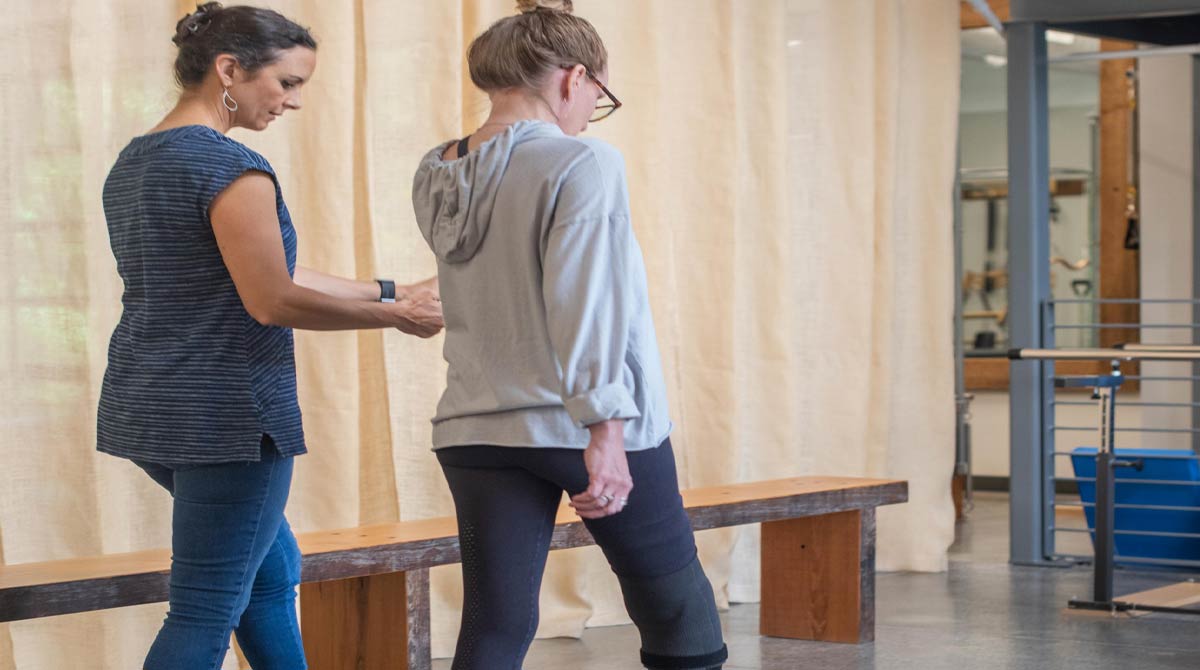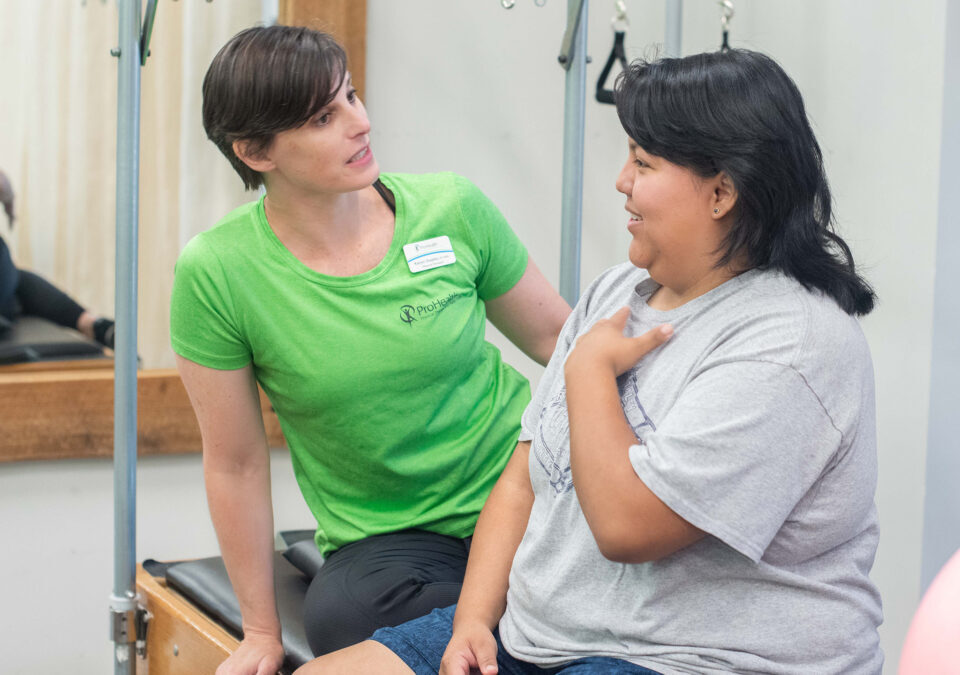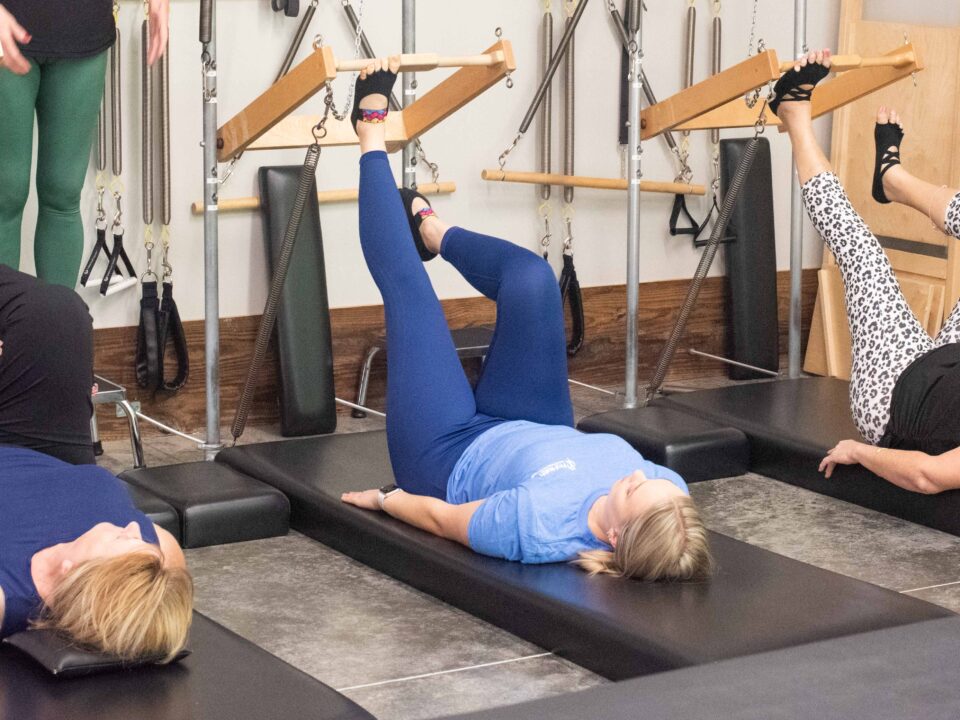- Mon - Fri
7.30 AM – 5.30 PM
Other hours upon request - 770-487-1931
Client + Patient ProHealth Story – PT Bethany helps Deanna Post-Amputation

Deanna Campbell entered a new phase of her life last year after undergoing a leg amputation. It began after a teenage accident and several unsuccessful surgeries to repair mobility. Unfortunately, the failed surgeries did little to repair but instead brought extreme chronic nerve pain leaving Deanna with limited independence. After she and her husband consulted Emory’s orthopedic surgery team, they chose amputation. While not a decision they ever anticipated, it also paved a pathway to minimal lifelong pain and renewed independence for Deanna.
Prior to surgery, Deanna lined up post-op physical therapy with ProHealth physical therapist Bethany Nelson. Together they share their experience working together through the major changes of amputation both physically and mentally.
Bethany, how long have you been working as a PT?
Bethany: I graduated from North Georgia College and State University (now UNG) in 2000 with an MSPT degree. I completed my doctorate in PT in 2013.
Bethany, had you ever worked with a client who’s experienced an amputation before?
Bethany: I have been treating amputees for 20 years. I teach prosthetic rehab to DPT students at GSU and teach professional CEU classes for PTs and prosthetists. I also developed and taught Prosthetics and Orthotics for the Mercer DPT program for 5 years. It is my specialty and my passion.
Deanna, when did you first start working with Bethany at ProHealth?
Deanna: It was right after I got my leg, I think May of last year.
What were your (Deanna) biggest challenges coming into PT with Bethany?
Deanna: Learning to walk again for the fourth time. Prior to my amputation, I walked in a boot for one year. This time I was convinced it would be the correct time with my new leg.
What specifically have you (Deanna) worked on with Bethany that has been helpful to you?
Deanna: Gait training, swinging my arms when I walk as if I have a flashlight on my chest. Bethany wanted me to download a metronome on my phone to help me get the sound and rhythm for walking again. Another option she gave was chewing gum! SOLD. When I work out, I chew gum. When I am walking I chew gum. Running? Chewing gum.
Bethany, when you began working with Deanna, what goals did you have for her?
Bethany: My goals for PT are the client’s goals. First and foremost, the goal is to achieve an independent gait with a rolling walker. That way the client can practice walking daily and be independently mobile in their own home.
The next goal is to progress gait to a single-hand device like a cane or a crutch indoors while gaining the confidence and stamina for outdoor/community distance gait with the rolling walker. Then we progress from outdoor gait to a single-hand device.
Confidence and trust in the prosthesis take a while to build, and fall prevention is key in this stage to prevent the “fear of falling” that can be very challenging to overcome once a fall has happened.
I also teach people how to get up from the floor, because lower-extremity amputees have a higher incidence of falls than individuals with 2 anatomical/sound limbs. Once independent and safe gait with a single hand device is achieved, if the client wants to progress gait to independent without an assistive device, we do that. If they want to run, I teach them.
I have helped people get back to things like fly fishing, bowling, bicycling, working, and dancing. I feel so fortunate to be able to help people get back to living the life they want, the life they need.
Deanna, how has Bethany provided support for you during this time in your life?
Deanna: Bethany is so much more than just a physical therapist. She’s intentional about your care and I respect her. She really listens to what’s going on in your life, not just what you’re treating in PT. Prior to my amputation, I was in a pain level of 8-10 all of the time. Now I can deal with light phantom pains and slight cramping, much better. But trying to walk on my new leg I started having back pain. I was really frustrated with this new back pain. Bethany explained everything and helped me. She suggested cupping and dry needling, which really helped. She also put me in touch with a state-of-the-art leg guy. Fourroux Prosthetics builds your socket on the same day! I trust her with my care. I also put in all of my homework with her. 🙂
What have you learned as a PT since working with Deanna?
Bethany: Even after electing amputation, as Deanna and her husband did, both often mourn the loss of their limb. They have to adjust to their new body. This can make things challenging for relationships. My role in helping clients with amputation is not just a physical one; I treat the whole person – mind, body, and spirit. Recovery from amputation is a continual evolution, not a destination.
What are your biggest accomplishments since working with Bethany at ProHealth?
Deanna: After sharing my story with Levitate Sport, a Running Blade company, I applied for a grant to cover the blade cost. The Heather Abbott Foundation awarded me a running blade within three weeks. With my new blade and trainer, I set a goal to run a road race before March 2023. March will be one year since my amputation.
On February 4th, I ran my first road race, Race for Angels in Newnan. The mile race was called the Fun Run and that is what I had. Fun. My husband entered this race right alongside me. Along the way, he cheered me on.
I’ve also been able to go help her with other fellow amputees and talk about the surgery to students too. What I have gained from Bethany is far more than just independence, it’s friendship.
AmputeePhysicalTherapyPromoVideo.mp4 from Muldrow Marketing on Vimeo.




